If you are in the market for microphones, we have a pretty good idea about how difficult it can get because of the number of types and models available. The market represents a huge range of microphones and the price differences between them can add to the confusion.
You might think that you can figure out if the microphone is good for high-quality recording or broadcasting based on the price, but that theory may not have that standing anymore.
It is okay to think that way if you are new to the world of recording. But if you have a general understanding of how microphones work and how many types there are, the process will become easier.
Any audio engineer will tell you how the selection of the wrong microphone can get you into trouble at a crucial time.
So let us begin with a basic understanding of how microphones work.
How Do Microphones Work?
Understanding how a microphone works will help you pick up the best one suitable for the job at hand.
There have always been two main functions of microphones, namely:
- Boosting a particular sound so that it can travel a large distance and can be heard by a larger audience
- Recording sound for further use or replay
If you really get down to it, a microphone functions somewhat identical to how the human ear works.
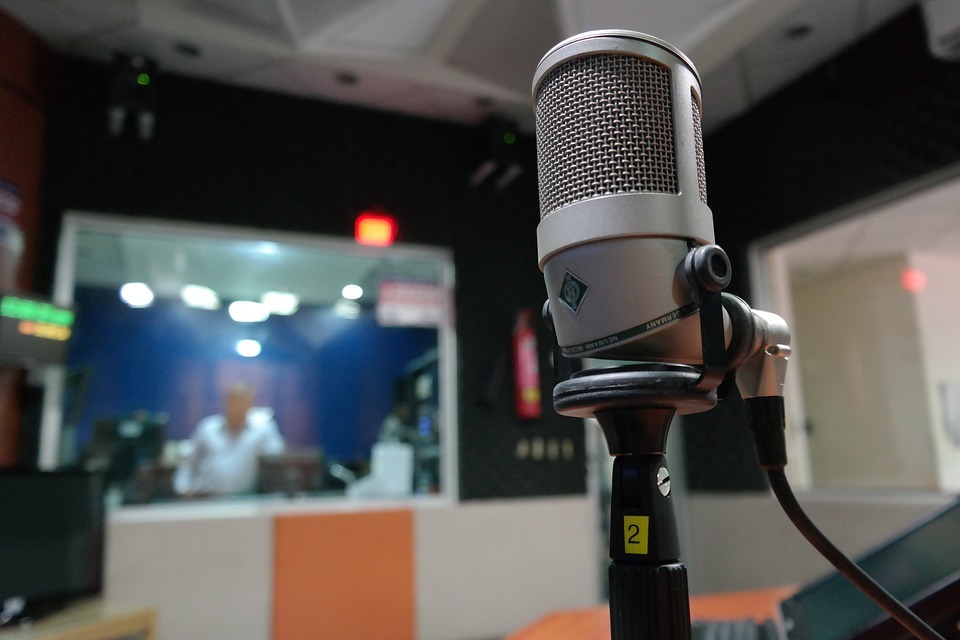
When a sound hits the eardrum in your ear, it is converted into electricity and that is how the brain interprets it. So how does a microphone do it?
Here is how:
- What you hear — sound — is energy that is being carried by vibrations in the air. So when you make a sound, the sound waves carry this sound to the microphone.
- Just like your eardrum, the microphone has a thin membrane made of fine plastic, called a diaphragm. When the sound waves hit the diaphragm, it moves back and forth, akin to how a leaf would move in an enclosed space if air goes through the gap.
- The diaphragm is held by a coil which also moves (when the diaphragm moves). This coil also holds a permanent magnet.
- The permanent magnet generates a magnetic field, and since the coil is moving back and forth, there is an electric current that is flowing through it at this point. This electrical current turns into an audio signal.
- This signal can be put through an amplifier or a device that records sound and can be used for various purposes.
The construction of the diaphragm and the transducer changes with the type of microphone. The technology also varies a bit. Now that we are here, let us look at the types of microphones. As we delve deeper, you will notice that there are a lot of similarities between the new and the old.
Types of Microphones
The common theme between all the microphones is that they turn sound into energy.
Let’s see some of these types of microphones:
- Large Diaphragm Condenser
- Small Diaphragm Condenser
- Dynamic
- Ribbon
Large Diaphragm Condenser
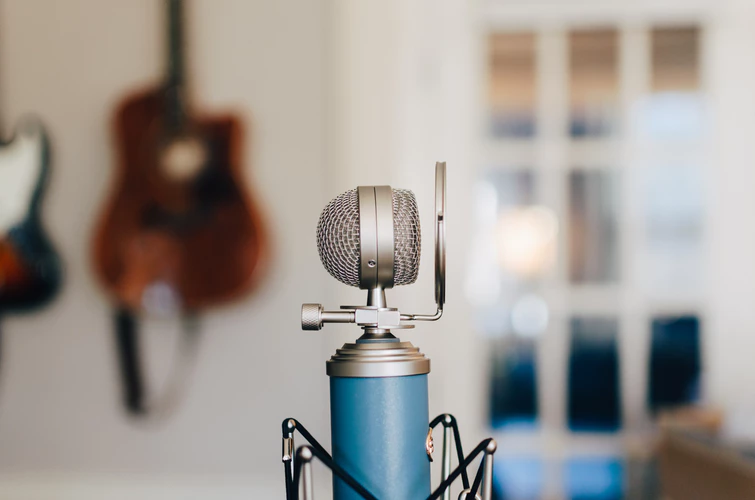
If you have been to a recording studio, you may have come across large diaphragm condenser microphones.
The main reason behind this is that they are considered the best for recording voice-overs, vocals, percussion or bass since they produce a nice, warm sound.
They accentuate the low frequencies, meaning they are really sensitive and usually even pick the hum generated by an air conditioner.
In short, when you hear “record quality”, chances are that it has been recorded on a large-diaphragm condenser microphone.
They also have a lot less self-noise, if you are comparing them with small diaphragm microphones.
Advantages
- These types of condensers give you a “record-quality” sound.
- Have a flattering quality, which may make vocals sound better in some cases.
- The sound is warmer, especially around the low frequencies.
- Often used as the first microphone by first-time home studios.
- Affordable, won’t make much of a dent in your budget.
Drawbacks
- If you are thinking of recording drum sounds up close, you’ll have to reconsider your choice because they cannot handle very loud sounds.
- These types of microphones tend to be a bit fragile, so careful handling is required.
Small Diaphragm Condenser
Small diaphragm condenser microphones have been around for a while and are said to be superior to large diaphragm condenser microphones.
This is because a small diaphragm condenser microphone has an extended high-frequency response and can follow sound waves more accurately.
As opposed to large diaphragm condenser microphones, a small diaphragm condenser microphones records the sound captures a “purer” and more natural sound. The sound produced is neutral, making small diaphragm condenser microphones useful for nearly everything.
If we wanted to capture sounds just like they were, say, chirping birds in the morning, we would be able to, without adding any “flavors” to it. This quality alone makes them the preferred choice for acoustic guitars and drums. One more plus for them is that they are designed to be lightweight, and are easy to position any which way you prefer.
Advantages
- Can pick up low frequencies regardless of their size, because, let’s face it, they are microphones, not speakers.
- It produces life-like sounds.
- These have a very consistent pick-up pattern, making them ideal for recording a large source of sounds such as a choir or an orchestra.
- Perfect for recording percussion or acoustic guitars because of their brilliant transient response and the ability to follow soundwaves more accurately.
- Their smaller size does not interfere with the “sound field”.
Drawbacks
- Large-diaphragm condensers win over small-diaphragm condensers when it comes to self-noise.
5 Best Condenser Microphones in 2021 [Reviews & Buying Guide]
Learn what the best condenser microphones are to buy for your home studio. We’ve researched the top-rated large/small diaphragm condenser microphones.

Dynamic Microphones
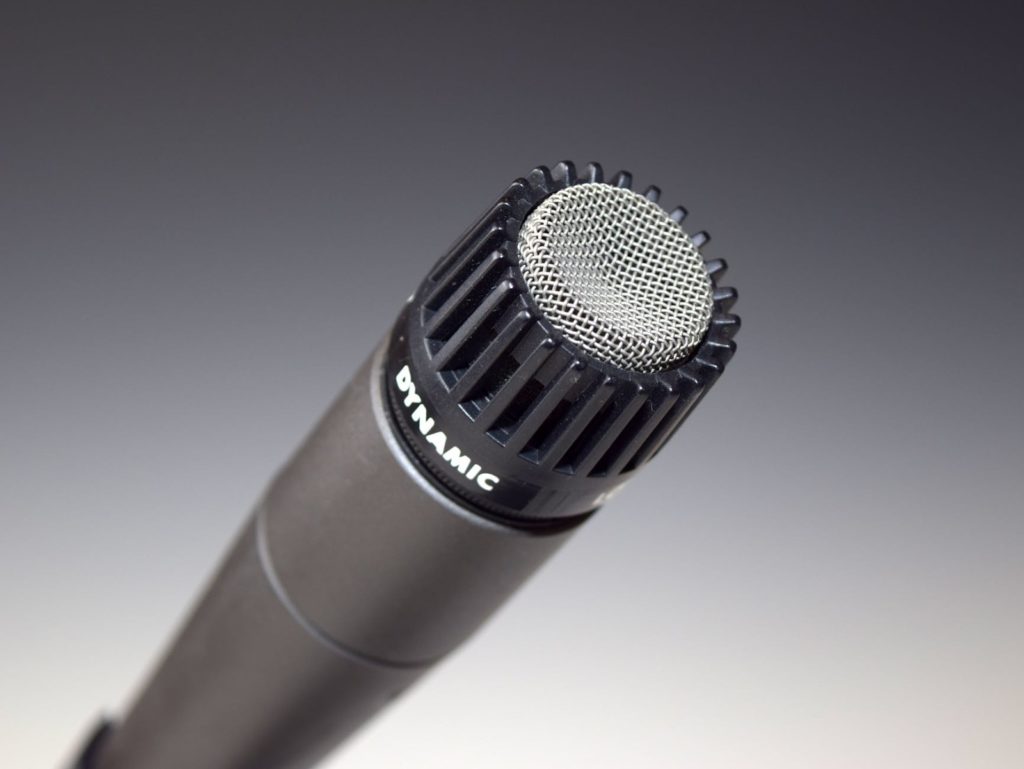
Dynamic microphones are the most commonly used and use induction coils, magnets and diaphragms to convert sound into an audio signal using electromagnetism.
These work on the same principle as we explained above. An electrical current is induced when an electric conductor moves inside a magnetic field. The diaphragm responds to the sound pressure created by sound waves.
The coil that is suspended in the magnetic field moves and a small electrical current is generated and carried out to the amplifier. Like the small diaphragm condenser, dynamic microphones are favored by sound engineers because of their natural isolation, which can mask incidental noises such as an accidental scraping of a nail on a guitar string or a creaking chair.
Having said that, this type of microphone is better at handling high-level frequencies and sound pressure compared with condensers and is less expensive too. They are also much sturdier and can handle more wear and tear.
Dynamic microphones fall under two categories:
- Ribbon microphones
- Moving coil microphones
Let’s take a look at these microphones below.
5 Best Dynamic Microphones for 2021 [Reviews & Buying Guide]
Dynamic microphones are the swiss army knife for musicians, it’s essential that you buy the best dynamic microphone as you will use it in all of your recordings
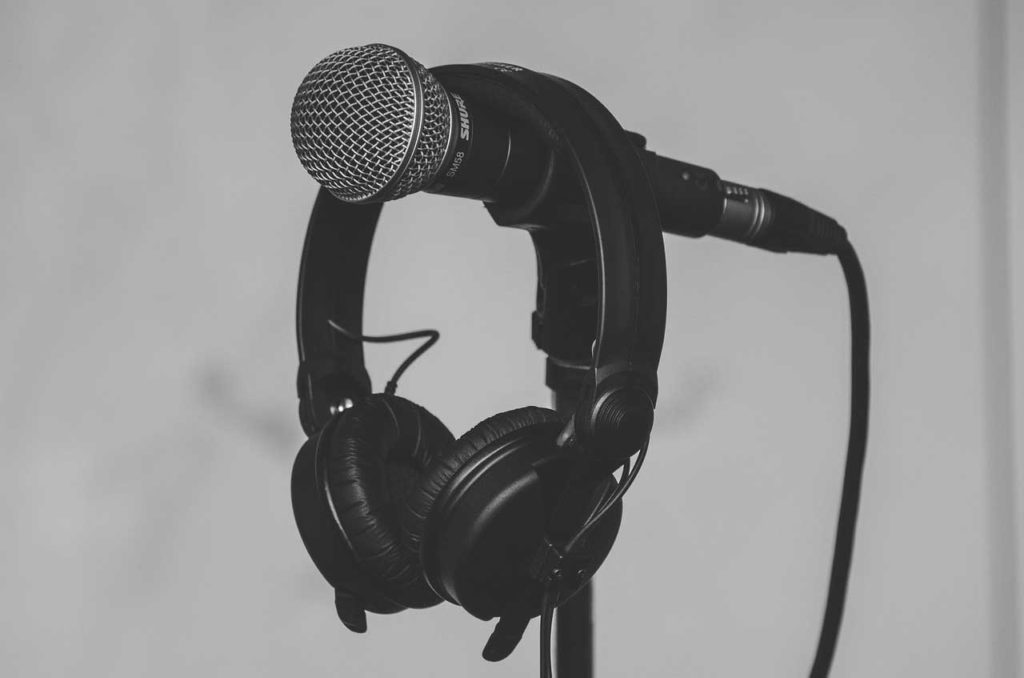
Ribbon Microphones
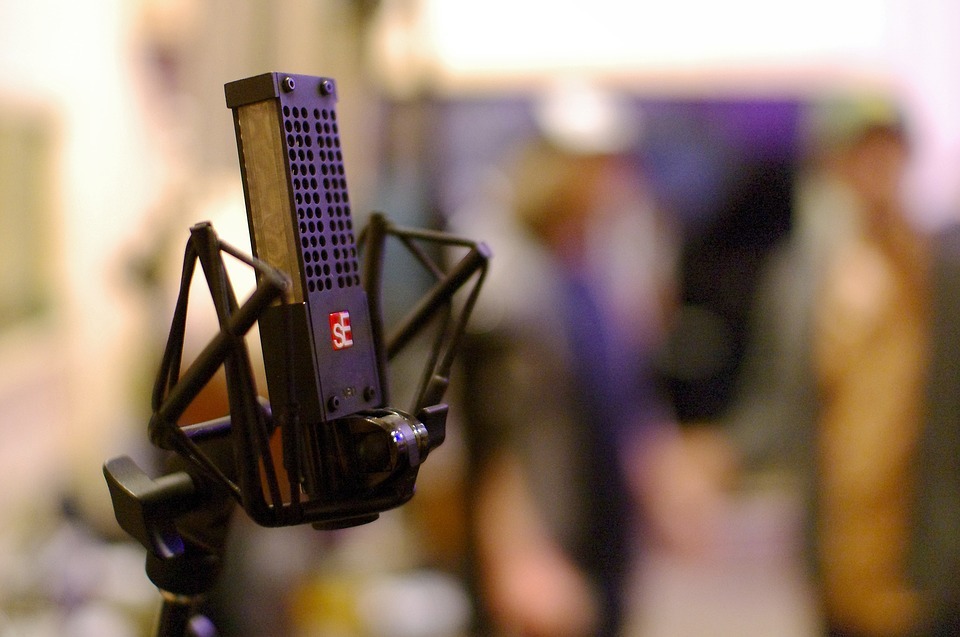
Ribbon microphones were used from the mid-1930s to the 1970s for their simplicity and clarity and were considered the first choice when it came to recording the ambiance of a room, vocals or a musical instrument. They use a really thin aluminum coil instead of a membrane and coil and work on the principle of electromagnetic induction.
This thin strip of aluminum coil acts as an electric conductor inside the magnetic field (between the two magnetic poles). This aluminum coil is known as the “ribbon”, hence the name. Because of its thinness (it is much lighter than a coil), this membrane works more like your eardrums and is more effective in picking up sounds.
This is simply because the ribbon microphone is reacting to the velocity of the air, unlike pressure as we have seen before. Let’s see this step-by-step:
- The thin aluminum foil or the “ribbon” is highly-elastic and is placed between two permanent magnets.
- When a sound, any sound is made, it causes the ribbon to vibrate.
- Since the ribbon is between two permanent magnets, it creates an electric current.
- Analog audio or electric analog is produced.
Ribbon microphones are bi-directional, which simply means that they can pick up sound from both sides of the microphone. They work very well while recording sounds that may have a nasal tone or a harsh frequency.
- Great for recording instruments such as trumpets or violins.
- They look really cool (as seen in the 50s movies), and can impress an audience.
- Give the recordings that “vintage” feel.
And these are some facts that may go against ribbon microphones:
- Ribbon microphones have a reputation for being fragile.
- Not suitable for recording loud sounds.
- Looks don’t come cheap, these can cost you a pretty penny.
Moving Coil Microphones
A moving coil microphone is also often called a dynamic microphone and is the most commonly used. The basic components of a moving coil microphone are a coil, magnet, and a diaphragm. They don’t cost much and are quite sturdy, making them popular while touring or during live performances.
So, unlike a ribbon microphone which has a reputation of being delicate, a moving coil microphone is a tough cookie, thanks to a protective grille around the diaphragm.
These microphones are great if you have drum kits, electric guitar amplifiers or guitar speaker cabinets because they have high-pressure sound levels. They have a basic design using passive circuitry that is simple.
This means that they do not require phantom power to function properly.
Let us see how it works, step by step:
- A light coil that is situated in a strong magnetic field is attached to a diaphragm.
- When near a sound source, the diaphragm vibrates and causes the coil to move back and forth.
- The movement causes a voltage to be produced across the entire coil, which is processed and put forward as the audio signal.
For a moving coil microphone, the frequency response is not linear, which is why this microphone is ideal for certain types of musical instruments listed above. Similarly, they are also not sensitive to ultra-fine sounds, hence producing a warmer response.
- Moving coil microphones have a sturdy build
- Excellent for live recordings
- Available at affordable prices
And these are some facts that may go against moving coil microphones:
- Compared with other microphones, the coil used is heavier, making it difficult to get a high-frequency response.
- Low output.
Now that we have seen the types of dynamic microphones, let’s take a look at the advantages and drawbacks of dynamic microphones as a whole:
Advantages
- Dynamic microphones are relatively cheap when compared with other types of microphones.
- These types of microphones do not require an external source of power to run.
- An all-round great performer.
- Solid, rugged build that can take a lot of beating.
- Excellent to use for live recordings and vocals.
- They can be used to work with loud sound sources.
Drawbacks
- The transient response and frequency of the microphone is limited because of the heavy diaphragm and coil.
- Not suitable for high-frequency recordings.
Modeling Microphones
If you have been in the music industry like we have been, or just starting up, you are probably aware that a microphone is crucial for an excellent recording. But for a lot of us, selecting a conventional microphone from the ones listed above can be a tedious process. And the solution? Modeling microphones, which are becoming pretty common.
I am not undermining the importance of all the classic microphones we have listed above.
Ribbon microphones are making a comeback and the popularity of condenser microphones is not on the decline either. If you are a sound engineer who is after that perfectly linear recording but lacks the equipment, modeling microphones are the answer.
A modeling microphone gives you the option of making a recording emulating the preferred microphone type. Using a modeling microphone, you can make a recording and play around with various microphone emulations without actually going near any of the classic microphones.
Here are some factors that might help you decide whether you want to use a modeling microphone or stick with the classic ones:
- Convenience: You don’t need any of the classic microphones for that desired effect. All you need to do is record your sound and use a plugin or a preset to get the desired sound. The presets help you change the “sound” of a previous recording as well.
- Price: Original hardware will always cost you more when you compare it with emulators. Microphone hardware can cost anything between $2,000-$18,000, whereas a microphone modeling system can be had for a fraction of the price.
- Reliability: Since there is no actual microphone involved, there is little chance that you will damage it. Even if you do, it does not cost much to replace it.
USB Microphones
These are the most easily available microphones you can find on the market. They are really easy to set up and don’t require any extra equipment. And the best part? They are cross-platform, portable and cost the least when compared with any other microphone on this list.
All you need to do to start recording is simply connect the microphone to your computer or laptop and fire up your favorite DAW (or digital audio workstation software).
Advantages
- Very easy to set up; just plug and play.
- Great for a lot of applications such as voiceovers, video-over-conferencing, acoustic instruments, and vocals.
- Very portable, can be taken anywhere you desire.
- Really affordable.
Drawbacks
- Unless you are buying a good-quality USB microphone, chances are you will be looking for a new one soon.
- Since most of these microphones are designed for podcast quality, do not expect outstanding results; they just get the job done.
Types of Microphone Stands
The microphone stand is an accessory that does not get the recognition it deserves most of the time. To an untrained eye, all microphone stands would look the same, but professionals know better.
Most people have a tendency to think — how different can one microphone stand be from another?

This is a brief but important topic and we will quickly introduce you to the different types. This largely overlooked piece of equipment is a crucial part of your recording gear and you should know a bit more about it before you go shopping for it.
Before we go on about what to look for when you are looking to buy a microphone stand, it is good to know the types:
- Tripod Stands: You have seen them everywhere; from school assembly halls to the most basic of concerts at your local pub. This type of stand has a three-pronged base and some have a counterweight built into them to avoid tipping over.
- Tripod Boom Stands: This is essentially a souped-up version of the tripod stand. It features an extended arm so that the microphone can have a longer reach in a horizontal plane as well. This is so that the performer is not limited to a rigid vertical position. They are available in adjustable and fixed lengths and are particularly useful when the floor space is limited.
- Round Base Stands: Round base microphone stands have a great advantage over the regular tripod stands, and that is unlike the latter, they take less space. They are also not as vulnerable to tipping over. A lot of these stands these days are available with chrome-plated bases, making them very sturdy. These stands are compatible with most types of microphones and could be used in a variety of settings. They are ideal for singers.
- Low-Profile Stands: The main thing that sets them apart from others is the height; they are low to the ground. These stands are great for instruments such as guitar amplifiers or bass drums and are quite sturdy.
- Desktop Stands: One can easily confuse them with low-profile stands, but they are not necessarily designed for musicians. You will see them in use for podcasts, voice-over recordings (if the recording material is exhaustive). Ideal for artists who record for audiobooks.
- Overhead Stands: You may have seen them on stage or at recording studios. They can provide support for large condenser microphones and are handy when they need to be placed higher (sometimes above green screens) or at tricky angles; the best example being drum overheads.
What to Look for Before Buying a Microphone Stand?
This is not very complicated, so we will make short work of it. Microphone stand prices vary and can cost anything for less than $10 to more than a few thousand dollars.
Here are a few factors that will help you decide on one:
- Stability: Does the microphone stand have a solid base? This is important. You don’t want the microphone to tip over and fall over any of your expensive equipment such as keyboards, mixing consoles, guitars or speakers and damage them.
- Ease: You should not be struggling with your stand while adjusting its height or angle. The more complicated it is, the more likely you are going to break it.
- Durability: Consider where you are going to be using this stand. Is it in-studio, live, or on the road. Or, you may want to buy more than one which is appropriate for the occasion, since this is not very expensive gear.
10 Best Microphone Stands of 2021
Check out our microphone buyers guide that covers the best straight stands, boom stands, and studio stands for any mirophone type.
Types of Cables
Cables are probably the least glamorous aspects of a studio and are hence more overlooked when compared to the microphone stand, which still gets to feature in some music videos. But cables are extremely important and actually deserve a guide all on their own, but we will cover some basics here.
At the very basic, there are two main types of cables:
- Digital
- Analog
At the very core, analog cables are standard regular cables that relay information through electricity, while analog cables convey information by the means of binary code, or a series of 1’s and 0’s.
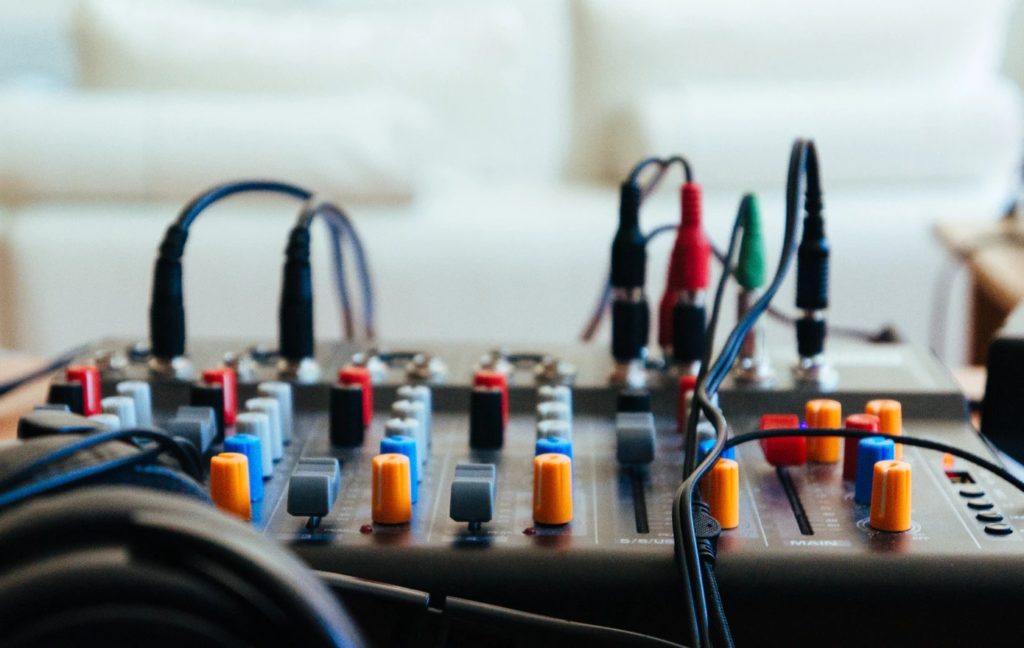
We will take you through both in the simplest way possible, but first, you need to understand balanced and unbalanced cables:
- Balanced Cables: These cables will cancel out any interference such as electronic equipment or radio equipment with the help of another conductor wire.
- Unbalanced Cables: You are likely to run into interference and noise with these cables. They have just one conductor wire.
Types of Analog Cables
- RCA Cables: You have probably glanced at them at a DJ’s console. These cables are unbalanced because they have only one conductor inside.
- Tip-Ring-Sleeve Cables: TRS cables have two-conductor cables inside, along with a ground cable. These are used as a balanced mono cable or a stereo cord.
- XLR Cables: These cables do not pick up any noise or interference and are usually very long. They are used to connect some professional gear and microphones.
- Tip-Sleeve Cables: TS cables are unbalanced mono cables and need to be kept as short as possible because otherwise, they are likely to pick up interference or noise.
Types of Digital Cables
- USB Cables: These can be found virtually anywhere, including many devices such as MIDI interfaces, USB microphones, drum machines and so on. They become the bridge between the computer and any music gear you may have.
- MIDI Cables: You will see them connecting MIDI controllers to a MIDI interface and convey event messages such as velocity, volume, aftertouch or tempo.
Conclusion
When you are recording, we cannot stress enough that the microphone is probably the most important equipment.
As you learned in this guide, there is plenty of variety available such as condensers, ribbon, moving coil, modeling or USB microphones and when to use them. But let me also say that choosing the right microphone also takes a lot of patience and sometimes, trial and error, depending on what you need it for.
So don’t stress too much about it and take that first step!





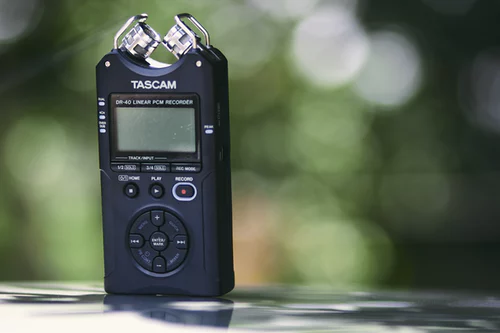





![5 Best Open Ear Headphones [Reviews & Buyer’s Guide] akg best open back headphones](https://homestudiohub.com/wp-content/uploads/2020/03/null-7-80x60.png)

